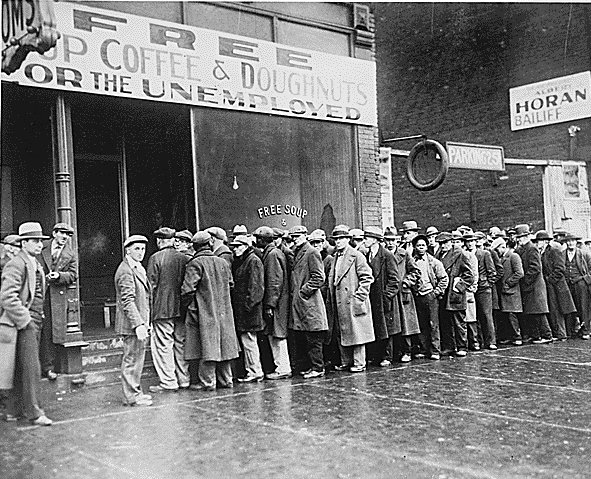Why are we throwing away food when people are hungry?
That is the question raised by two stories dominating the front pages. There are “staggering food bank lines” across the country. The pandemic lockdown has outed the shameful truth of America’s food insecurity.
“These Photos Show Staggering Food Bank Lines Across America” (Mother Jones)
“Cars Line Up for Miles at Food Banks” (New York Times)
At the same time, farmers are dumping milk and plowing fields under because their main customers –the commercial and institutional food service business – have essentially been shut down.
Dumped Milk, Smashed Eggs, Plowed Vegetables (New York Times)
California Farmer Plows Under Lettuce…(Reuters)

A tractor mulches green beans at an R.C. Hatton farm in Florida. “It’s heartbreaking,” an owner of the farm said.Credit…Rose Marie Cromwell for The New York Times
So here’s the challenge. Why can’t we put food that is being produced and destroyed on the dinner tables of the hungry?

Herbert Hoover, 31st President, official portrait (Library of Congress)
Sounds like a job for Herbert Hoover.
Yes, that Herbert Hoover, the president who is usually associated with the tragic images of America’s Great Depression when homeless camps spread across the country were called “Hoovervilles.”
But it was Herbert Hoover who was credited with saving millions of lives during World War I. Orphaned as a child, Hoover was a self-made success in the field of mining and engineering. He had become a financier and began a career in philanthropy. In 1917, before the United States entered the war, Hoover was tasked with getting food into the mouths of starving people in a war zone. With agreements from combatants, Hoover organized a massive program of locating food surpluses and transporting them to Europe as the trench wars continued.
According to the Herbert Hoover Presidental Museum and Library, Hoover was named to head the U.S. Food Administration, which guided the effort to conserve resources and supplies and to feed America’s European allies.
“Hoover became a household name—‘to Hooverize’ meant to economize on food. Americans began observing ‘Meatless Mondays’ and ‘Wheatless Wednesdays’ and planting War Gardens.”

National Archives https://catalog.archives.gov/id/512516
He got money from governments and charity, sailed his own fleet which flew his flags, took over railways, set up a telegraph network, issued his own passports, made treaties with governments, negotiated safe passages through war zones on land and sea and saved countless lives.
It was not a charity he ran. It was an industry. It was almost a state.
A British diplomat remarked that Hoover had set up a ‘piratical state organised for benevolence.’
After the Armistice was signed in November 1918, President Wilson appointed Hoover to head the European Relief and Rehabilitation Administration. The situation in post-war Europe was dire. But Hoover was up to the job. Marshaling the needed resources, he channeled 34 million tons of American food, clothing, and supplies to war-torn Europe.
He then performed a miraculous job of feeding Russians in aftermath of the Russian Revolution that gave Lenin’s Bolsheviks control of the future Soviet Union.
It must also be said that as president, after the Great Depression hit the United States, Herbert Hoover was largely ineffective in addressing starving Americans. Feeding hungry Americans was left to charities. The soup kitchen and bread line became the symbols of Hoover’s failed policies.

Depression era Bread Line Photo Source: Social Security Administration
Surely today, a nation that can deliver groceries overnight and summon a stranger in a car to pick us up on a street corner can figure out the logistics. Pay the farmers for their crops. Get the milk and produce into the hands of the people who can prepare it. That means jobs and income for some, and a decent meal for others.
The high priest of “Rugged Individualism” did it. We can do it.